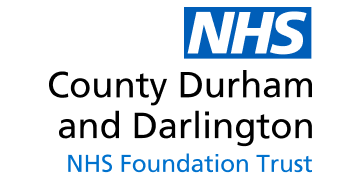By James Shields - 9th Jan 2020
Read time - 5 minutes
Software development can be approached in many ways. Through our experience of delivering technical solution in complex clinical environments, we have learnt many lessons (often the hard way!) and below are the key approaches which we use to maintain quality and maximise our impact.
As a lean technology company we use the most effective product development methodologies. Our self-organising team consists of engineers, designers, analysts, clinical specialists, testers and project managers to deliver software which is continually improving and adding more value to our customers. We have developed processes to promote innovation, learn from failure and constantly evaluate the impact of our service through both theoretical best practice and years of experience to find the methods that work for us.
Iterative product development
To ensure the quality and effectiveness of our solution we use agile development to ensure that customer and user feedback is constantly being fed into the planning and design phases of development, using short development cycles wherever possible.
At all stages of the software release cycle we gather this feedback using a variety of methods (e.g. questionnaires, user focus groups, interviews), ensuring that we understand the impact of any changes we make, and that we gather and continually update our users’ requirements.
We support this qualitative research with aggregate analytics from user tracking. We monitor the impact of system changes on user engagement and retention with general KPIs such as number of log-ins, length of session, number of shifts created as well as specific feature KPIs which are designed for the optimisation of the individual features being upgraded or built.
We discuss findings and review any learnings with the product team. In collaboration with our customers, we then prioritise the planning and design of the next feature with incorporation of these findings.
For complex features we conduct workshops to review customers key “pain points”, consulting with a wide range of stakeholders to get an accurate and balanced view of the environment. We map complex processes and propose streamlined alternatives.
Well-documented requirements are then presented to the internal product team for refinement. At this stage our engineers, designers and analysts review the requirements and decide if they are sufficiently well understood to be put into the development cycle. At that point the requirements will be either returned to the customer for further clarification added to our project management tool as a “user story”
Continuous integration & deployment
We operate under a continuous integration and development (CI/CD) deployment cycle whereby we are constantly releasing improvements and updates to our platform. As entirely cloud infrastructure accessed by web and mobile technologies it gives us full autonomy and near real-time (with the exception of the mobile client) deployment capabilities.
Software updates are clearly notified to end users as soon as the update has been persisted to our servers, and they are prompted to refresh the page in their browsers. This ensures all users are accessing the same version of software at all times. We handle this with effective in-app and email communication campaigns for major updates and new feature releases - these often feature screenshots and video to support text explanations of the updates, and links to tutorials and further information.
We direct users to an in-app Help Centre which has explanatory information for the main user-facing feature. We continually aim to minimise the requirement for users to visit the Help Centre by making the UI and UX of our software as intuitive as possible - and we have done this to great effect. Finally however, if users are really stuck, they are able to contact us via real-time in-app chat which is promptly answered by our customer support team.
Analysing effectiveness
To evaluate the effectiveness of our platform we perform a baseline analysis of the organisation before we deploy, and continuously monitor our impact via mutually agreed key performance indicators (KPIs). For our clients the primary KPIs are 1) the number of shifts created and filled by bank staff and 2) percentage fill rate.
We communicate this and other KPIs to our customers via real-time in-app dashboards and regular reports, enabling comparison and analysis over time. We also develop bespoke reports where requested and provide organisations access to a read-only version of their data so they can perform their own unrestricted analysis.
There are other measures of effectiveness such as reduction in administrative overhead which are harder to quantify, but can be reached through a WTE (working time equivalent) analysis pre- and post-deployment.
James Shields
CEO - Circular Wave
For all enquiries or to request a demo contact [email protected]










